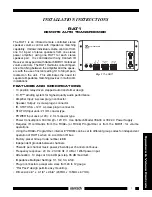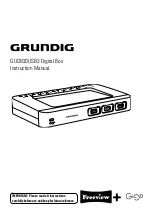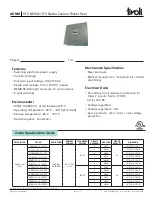
V A L A V I O N I C S , L I M I T E D
C O M 7 6 O T S O V H F T R A N S C E I V E R
INSTALLATION/OWNER’S MANUAL PAGE
17
VPN 701002
REVISION 6-AUG 1999
PARAGRAPH
2.1
INSTALLATION – GENERAL INFORMATION
This section provides interconnect diagrams and installation criteria for the COM 76O TSO VHF Communications Transceiver.
By following these instructions, the COM 76O TSO VHF Communications Transceiver will perform as specified and provides excellent
performance to meet its design.
2.2
UNPACKING AND INSPECTING EQUIPMENT
Exercise care when unpacking the equipment. Visually inspect the unit for any evidence of damage incurred during the shipment. It is
advisable to retain the shipping carton and packing material should it b necessary to return the unit.
2.3
INSTALLATION
Details and other considerations for the installation of the COM 76O TSO VHF Communications Transceiver are as follows:
2.3.1
Location
The first consideration after the visual inspection has been made to locate the position on the aircraft panel where the unit and
tray will be mounted. The tray is to be mounted rigidly in the aircraft panel with rear support brackets (fabricated by the
installer) attached from the rear provisioned 6-32 nutserts (one on each side at rear of mounting tray) to airframe.
Once a location has been decided upon , a visual inspection should be made of the area directly behind the panel which will be
occupied by the COM 76O TSO VHF Communications Transceiver mounting tray and harness assembly for obvious
obstructions such as heater ducts, control cables, fuel and oil lines or any other obstruction. Pay particular attention to control
yoke assemblies. They should be physically moved the full limit of their travel and verified that sufficient clearance exists prior to
beginning installation.
2.3.1.1
Cooling Requirements
The COM 76O TSO VHF Communications Transceiver does not required forced air cooling when installed by itself or in a very
loose avionics stack. However, the heat generated from several units tightly stacked one on top of the other could certainly cause
damage. Therefore, forced air stack cooling is recommended in any condition where excessive heat may be present.








































